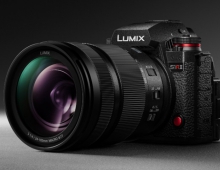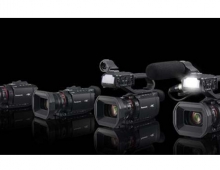
Panasonic Develops a 2.2-Micron Pixel Image Sensor for Mobile Handsets
The diagonal 5.6 mm (Type 1/3.2) sensor achieves 3-megapixel resolution to improve quality of camera phone pictures.
Matsushita Electric Industrial Co., Ltd., best known for its Panasonic brand products, today announced a new member of the v Maicovicon, Panasonic's next-generation image sensor family for mobile devices. By successfully reducing the individual pixel size to 2.2-micron square, the smallest in the industry to date, the new sensor is capable of arranging 3 megapixels on a single chip with a 1/3.2-inch optical format (image diagonal of 5.6 mm). With this new addition, the v Maicovicon family now offers three types of image sensors including a diagonal 5.6 mm (Type 1/3.2) 2-megapixel and diagonal 4.5 mm (Type 1/4) 1.3-megapixel image sensors.
The latest sensor enables to make mobile phones smaller and thinner with improved picture quality and less power consumption. Stores now offer printout services for camera-phone pictures and there is real demand for better picture quality. Achieving a greater pixel count means the new 3-megapixel sensor reproduces clearer images that can be enlarged without compromising picture quality.
The v Maicovicon is a product of Panasonic's expertise and experience in state-of-the-art semiconductors for digital devices. Earlier this year, the company achieved a 2.8-micron square pixel, the smallest at that time, based on a new pixel array technology it developed for increased photosensitivity. By adopting a 2.2-micron pixel, the new image sensor can technically array 2 megapixels in a 1/4-inch format.
Low-noise wafer process technology enables the image sensors to take clear and crisp pictures in low light environments. Extended battery life is achieved using efficient signal read-out technology that permits the v Maicovicon sensor to use less wattage, about one fifth of the power required by Charge Coupled Device (CCD) image sensors when taking a picture of equivalent resolution.
Volume production will start in March 2005.
Including current applications, Matsushita Electric Industrial Co., Ltd. owns 196 Japanese and 50 overseas patents on the new image sensor.
The latest sensor enables to make mobile phones smaller and thinner with improved picture quality and less power consumption. Stores now offer printout services for camera-phone pictures and there is real demand for better picture quality. Achieving a greater pixel count means the new 3-megapixel sensor reproduces clearer images that can be enlarged without compromising picture quality.
The v Maicovicon is a product of Panasonic's expertise and experience in state-of-the-art semiconductors for digital devices. Earlier this year, the company achieved a 2.8-micron square pixel, the smallest at that time, based on a new pixel array technology it developed for increased photosensitivity. By adopting a 2.2-micron pixel, the new image sensor can technically array 2 megapixels in a 1/4-inch format.
Low-noise wafer process technology enables the image sensors to take clear and crisp pictures in low light environments. Extended battery life is achieved using efficient signal read-out technology that permits the v Maicovicon sensor to use less wattage, about one fifth of the power required by Charge Coupled Device (CCD) image sensors when taking a picture of equivalent resolution.
Volume production will start in March 2005.
Including current applications, Matsushita Electric Industrial Co., Ltd. owns 196 Japanese and 50 overseas patents on the new image sensor.





















